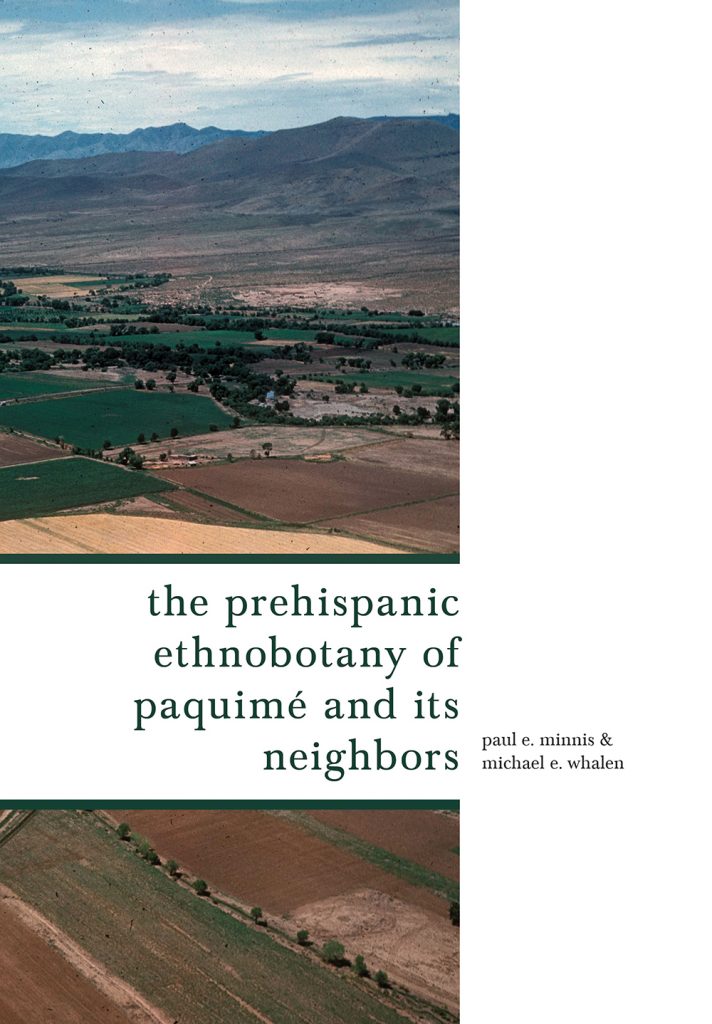The Prehispanic Ethnobotany of Paquimé and Its Neighbors
Paperback ($35.00), Hardcover ($67.00), Ebook ($67.00)
Buy
Paquimé (also known as Casas Grandes) and its antecedents are important and interesting parts of the prehispanic history in northwestern Mexico and the U.S. Southwest. Not only is there a long history of human occupation, but Paquimé is one of the better examples of centralized influence. Unfortunately, it is also an understudied region compared to the U.S. Southwest and other places in Mesoamerica.
This volume is the first large-scale investigation of the prehispanic ethnobotany of this important ancient site and its neighbors. The authors examine ethnobotanical relationships during Medio Period, AD 1200–1450, when Paquimé was at its most influential. Based on two decades of archaeological research, this book examines uses of plants for food, farming strategies, wood use, and anthropogenic ecology. The authors show that the relationships between plants and people are complex, interdependent, and reciprocal. This volume documents ethnobotanical relationships and shows their importance to the development of the Paquimé polity.
How ancient farmers made a living in an arid to semi-arid region and the effects their livelihood had on the local biota, their relations with plants, and their connection with other peoples is worthy of serious study. The story of the Casas Grandes tradition holds valuable lessons for humanity.
This volume is the first large-scale investigation of the prehispanic ethnobotany of this important ancient site and its neighbors. The authors examine ethnobotanical relationships during Medio Period, AD 1200–1450, when Paquimé was at its most influential. Based on two decades of archaeological research, this book examines uses of plants for food, farming strategies, wood use, and anthropogenic ecology. The authors show that the relationships between plants and people are complex, interdependent, and reciprocal. This volume documents ethnobotanical relationships and shows their importance to the development of the Paquimé polity.
How ancient farmers made a living in an arid to semi-arid region and the effects their livelihood had on the local biota, their relations with plants, and their connection with other peoples is worthy of serious study. The story of the Casas Grandes tradition holds valuable lessons for humanity.
"The Prehispanic Ethnobotany of Paquimé and Its Neighbors is an essential book that fills a void in knowledge of prehispanic food production and economy in northern Chihuahua."—Michael W. Diehl, American Antiquity
"Ultimately, Minnis and Whalen’s data and ideas create a strong foundation for continued research in this region. More broadly, their work serves as an example for scholars of other regions to look for inspiration in their own explorations of socioecological relationships. Specifically, scholars should heed their call for human-environment studies to move beyond long-plaguing biases toward single taxa or uses."—Rebecca Friedel, Ethnoarchaeology
“Based on decades of research, Minnis and Whalen expertly and effectively explore prehistoric plant use, agriculture, and human-plant interrelationships that formed the economic basis at Paquimé (Casas Grandes) and neighboring communities in northwestern Chihuahua, Mexico. This work represents a significant contribution to the prehistory of northwestern Mexico, an understudied region that witnessed the rise of an elaborate society with far-reaching networks during the Medio Period (AD 1200–1450).”—J. Kevin Hanselka, Archaeobotanist, U.S. Southwest and Northern Mexico
“Minnis and Whalen have produced the definitive book on the paleoethnobotany of the Casas Grandes Region. [This] is certain to be a desk reference of choice for future generations of archaeologists working in Chihuahua.”—Jerimy J. Cunningham, University of Lethbridge
"Ultimately, Minnis and Whalen’s data and ideas create a strong foundation for continued research in this region. More broadly, their work serves as an example for scholars of other regions to look for inspiration in their own explorations of socioecological relationships. Specifically, scholars should heed their call for human-environment studies to move beyond long-plaguing biases toward single taxa or uses."—Rebecca Friedel, Ethnoarchaeology
“Based on decades of research, Minnis and Whalen expertly and effectively explore prehistoric plant use, agriculture, and human-plant interrelationships that formed the economic basis at Paquimé (Casas Grandes) and neighboring communities in northwestern Chihuahua, Mexico. This work represents a significant contribution to the prehistory of northwestern Mexico, an understudied region that witnessed the rise of an elaborate society with far-reaching networks during the Medio Period (AD 1200–1450).”—J. Kevin Hanselka, Archaeobotanist, U.S. Southwest and Northern Mexico
“Minnis and Whalen have produced the definitive book on the paleoethnobotany of the Casas Grandes Region. [This] is certain to be a desk reference of choice for future generations of archaeologists working in Chihuahua.”—Jerimy J. Cunningham, University of Lethbridge
 The University of Arizona Press
The University of Arizona Press

